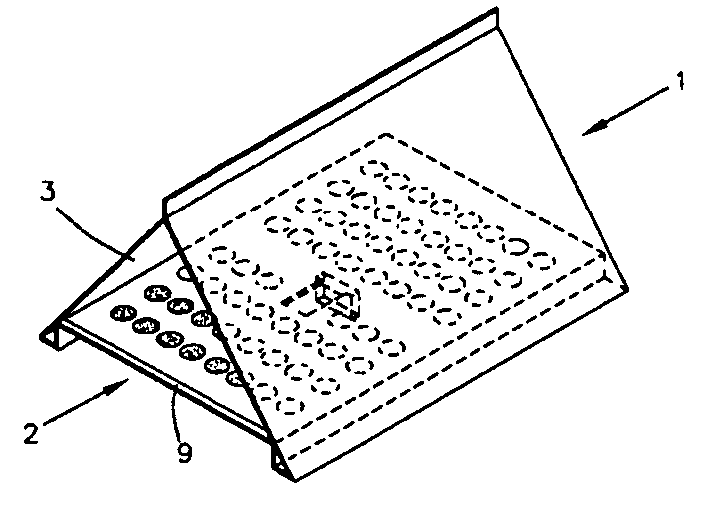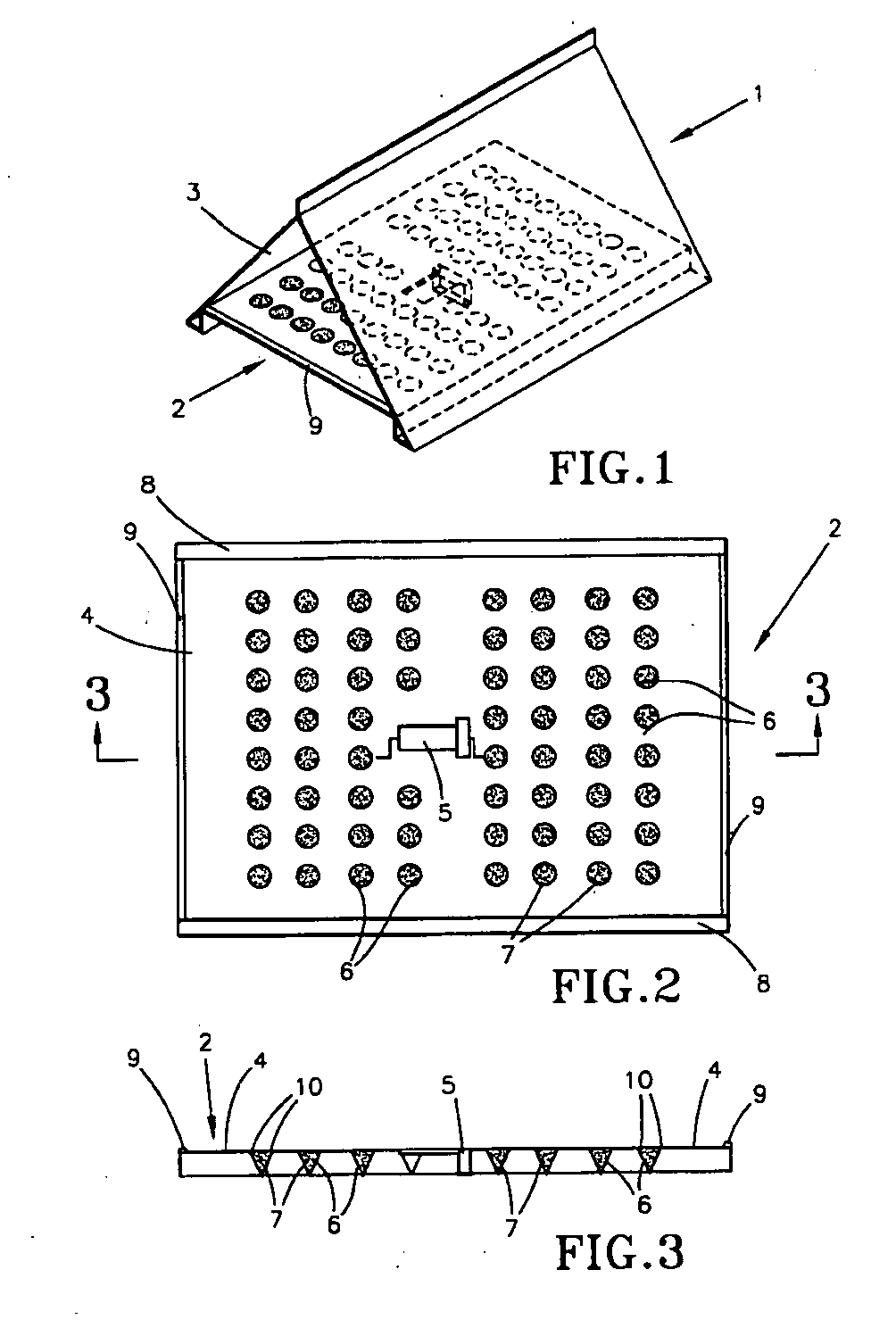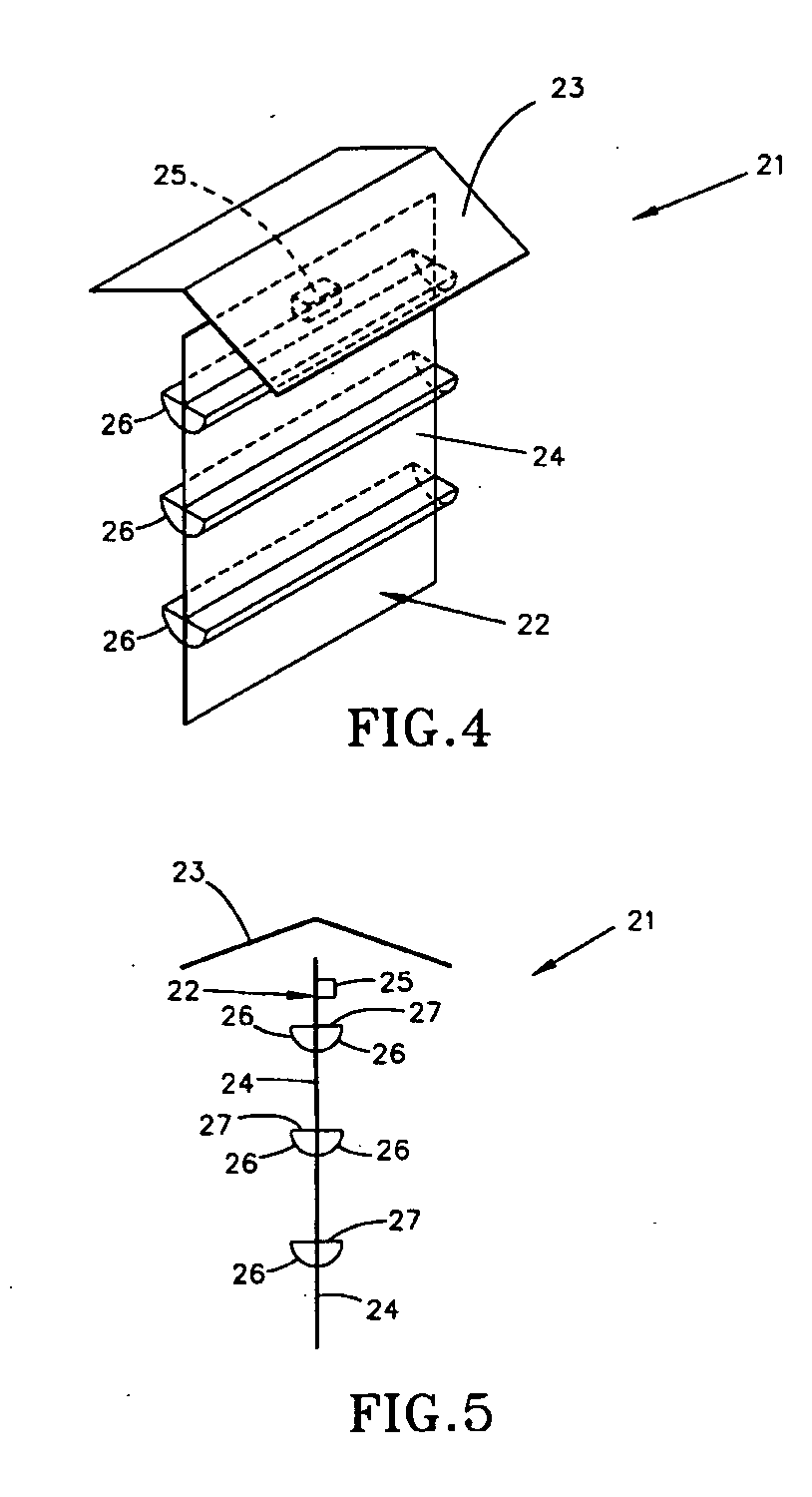Pest control method and apparatus therefor
a technology for pests and apparatus, applied in the field of pest control, can solve the problems of contaminating the environment and consequentially affecting human and animal health, and achieve the effect of reducing the number of pests
- Summary
- Abstract
- Description
- Claims
- Application Information
AI Technical Summary
Benefits of technology
Problems solved by technology
Method used
Image
Examples
second embodiment
[0056] Such a vertical orientation of the plate and associated powder-bearing surface is shown in a flying insect pest monitoring trap 21 in FIGS. 4 and 5. This vertical orientation of powder-bearing surfaces 24 of a base plate 22 is, in certain circumstances, desirable because some species of flying insect pest, for example, the olive fruit fly, land preferentially on vertical surfaces.
[0057] In the second embodiment of the flying insect pest monitoring trap 21 shown in FIGS. 4 and 5, the opposed vertical surfaces 24 of the plate 22 are again provided with recesses, this time in the form of troughs 26, in which is accommodated, once again, a pest-killing or behavior-modifying powder 27 which, as described in reference to the first embodiment, is capable of being rendered airborne and electrostatically charged as a result of the wing beats or other movements of flying insect pests in the region thereof.
first embodiment
[0058] The trap 21 is provided with a roof 23 for preventing rainwater from accumulating in the troughs 26, while a source 25 of odor attractant, such as that discussed above in relation to FIGS. 1 to 3, is provided at the upper region of the plate 22.
[0059] Thus, flying insect pests are attracted to the trap 21 by a combination of visual features, including color, and the odor attractant 25, again as in the case of the first embodiment.
[0060] The troughs 26 in which the powder 27 is accommodated, may be placed at an angle to their respective surfaces 24, or, as shown in FIGS. 4 and 5, may be in the form of cup or trough-shaped projections, namely, the troughs 26.
[0061] The shape of the powder-accommodating recesses 6 of the first embodiment of the trap 1 and the corresponding troughs 26 of the second embodiment of the trap 21 may also be such that any turbulence of air flowing into them is reduced, which might otherwise lead to vortex formation. For example, they may be V-shaped ...
PUM
 Login to View More
Login to View More Abstract
Description
Claims
Application Information
 Login to View More
Login to View More - R&D
- Intellectual Property
- Life Sciences
- Materials
- Tech Scout
- Unparalleled Data Quality
- Higher Quality Content
- 60% Fewer Hallucinations
Browse by: Latest US Patents, China's latest patents, Technical Efficacy Thesaurus, Application Domain, Technology Topic, Popular Technical Reports.
© 2025 PatSnap. All rights reserved.Legal|Privacy policy|Modern Slavery Act Transparency Statement|Sitemap|About US| Contact US: help@patsnap.com



